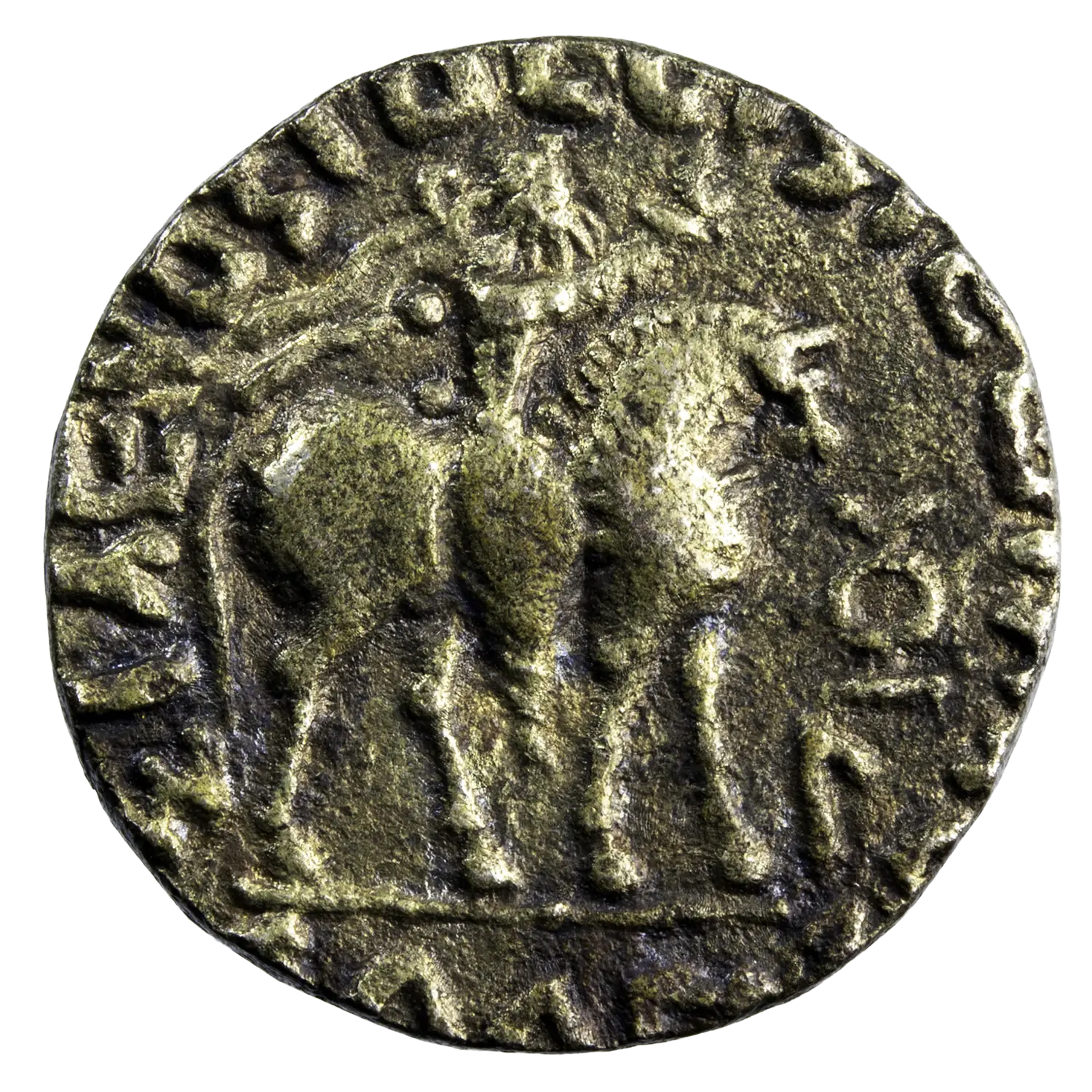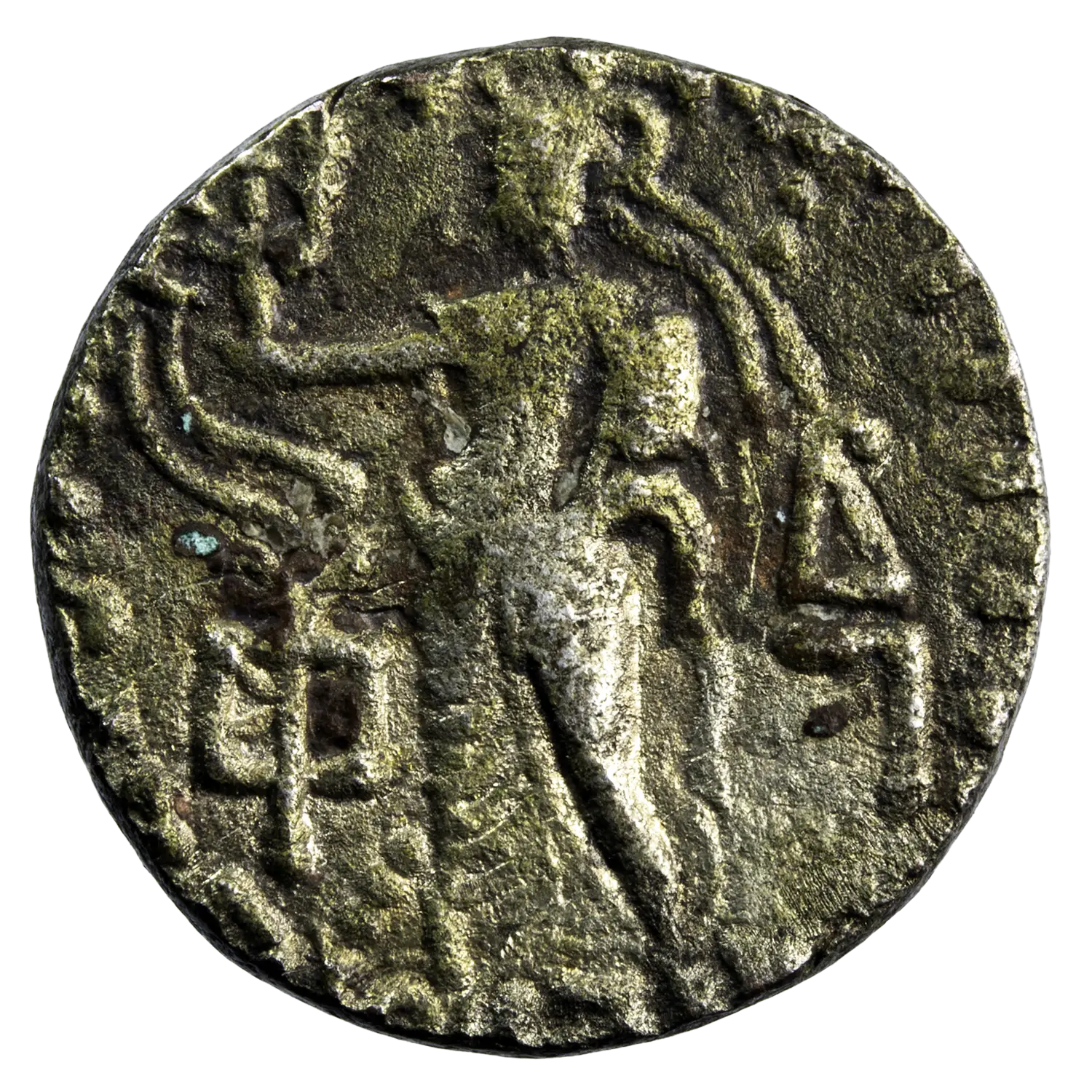Description
The Indo-Scythians were nomadic peoples of Saka origin (Eastern Scythians) who came from Central Asia. They settled in northwestern India and present-day Pakistan toward the end of the 1st century BCE.
King Azes I (circa 58–20 BCE) was one of their most powerful rulers. His reign marked the end of the Indo-Greek kingdom and the rise of Scythian power in the Gandhara region.
The tetradrachms of Azes imitate Greco-Bactrian models, combining Greek iconography with Kharoshthi inscriptions. These coins reflect a unique cultural fusion between the Greek, Iranian, and Indian worlds, and played a crucial role in the spread of Greco-Buddhist art throughout Gandhara.


